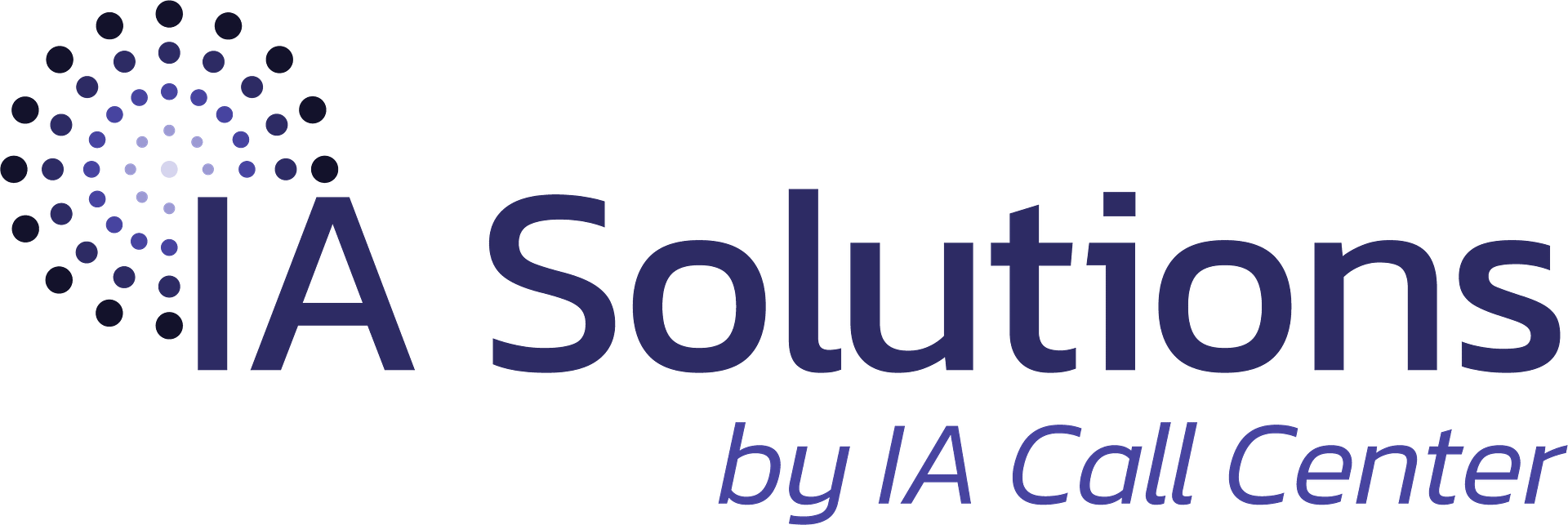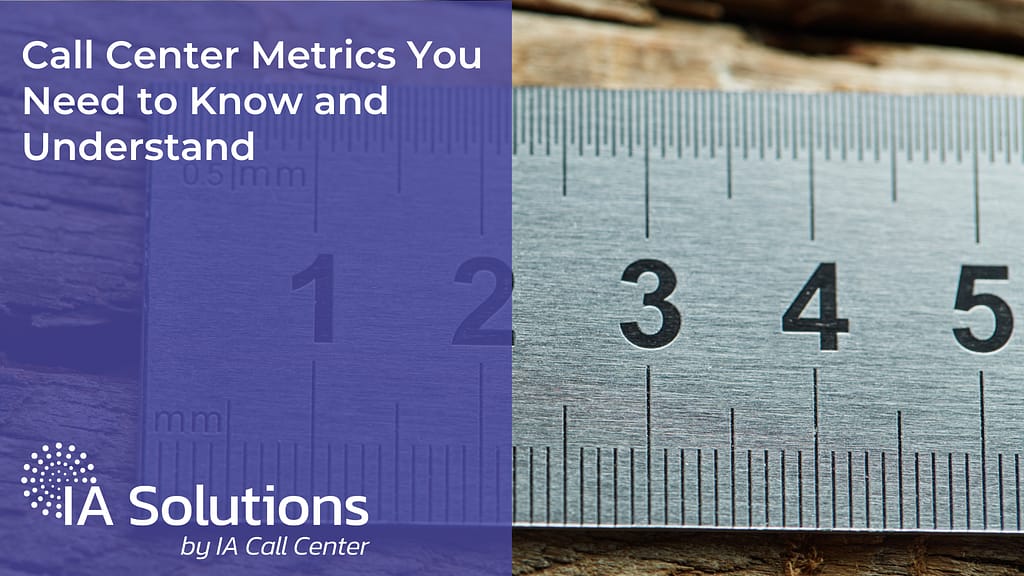Call Center Metrics You Need to Know and Understand
Rather listen to this post instead? Click the “Play” button below to hear it now.
Introduction
A good call center is usually the primary component of an effective customer service team. When your call center is performing as it should, your customers are generally happy and satisfied. But how do you know if your call center team is up to snuff or performing as well as it could? That can be a tricky question to answer. Fortunately, many aspects of customer service performance can be measured and evaluated through the use of call center metrics.
In this article, we will discuss call center metrics and cover what they are, which ones are important, and how to interpret them so you can improve your call center and/or customer service operations. Therefore, let us begin by looking at an overview of call center metrics and why they’re important.

What Are Call Center Metrics?
According to Investopedia, “Metrics are measures of quantitative assessment commonly used for assessing, comparing, and tracking performance or production. Generally, a group of metrics will typically be used to build a dashboard that management or analysts review on a regular basis to maintain performance assessments, opinions, and business strategies.”
As they pertain to call centers, metrics are measurements used to gauge performance at the agent and center levels to determine the overall performance, productivity, and effectiveness of other key customer satisfaction-related activities.
Call center managers and executives monitor these metrics – sometimes known as key performance indicators or (KPIs) – to assess efficiency and other variables. Call center executives also use metrics or KPIs to make the case for improved customers service on behalf of their clients. In short, metrics or KPIs help call centers figure out what they’re doing right and what needs to be improved.
There Are Many Call Center Metrics But…
Customer services managers or call center managers continuously monitor different patterns and trends to determine what areas need to be improved in order to provide better customer experiences. To do this, managers depend on a wide range of KPIs that measure many aspects of a call center. When viewed in aggregate, these metrics provide insight into how their customer service teams are doing.
While there are countless possibilities when it comes to KPIs or metrics, a few stand out as being the most telling or important in determining how well a call center or customer service team is performing. Therefore, let’s look at some of the most important metrics call centers use to measure performance, productivity, and efficiency.
Customer Satisfaction
The Customer Satisfaction (CSAT) metric measures how customers feel about their experiences with your company. In determining customer satisfaction scores, call centers typically use surveys or tools like the Net Promoter Score (NPS) to help quantify customer satisfaction levels. Call centers also use these surveys to get valuable customer feedback.
Typically, CSAT numbers are used to quantify satisfaction numbers related to customer service-related activities and not with the client business itself. This means CSAT can give you an excellent overview of how your customer service team is doing, but not your business as a whole.
Generally speaking, good CSAT numbers indicate solid performance by the call center team. However, CSAT should never be the only metric considered when evaluating call center performance. Other metrics and KPIs are indeed at least just as important.

First Call Resolution
Among the many call center metrics, first call resolution is one of the most important. First Call Resolution (FCR) is a metric frequently used by call centers to measure the number or percentage of customer calls resolved during the first interaction with a call center agent. FCR is an important metric because it shows the effectiveness of a call center’s processes and staff in resolving customer issues.
A high FCR rate is often considered a positive indicator of customer satisfaction, as it means that customers can get their issues resolved without having to call back or speak to multiple representatives. A high FCR rate can help improve the overall customer experience and reduce the burden on the call center, as it potentially reduces the number of repeat calls.
Besides improving the customer experience, a high FCR rate can also have financial benefits for a call center. By reducing the number of repeat calls, a call center could potentially reduce the number of agents or resources required to handle customer inquiries and improve overall efficiency.
First call resolution is a critical metric for any call center and is an important indicator of the overall effectiveness and efficiency of the operation. By focusing on strategies to improve FCR, call centers can improve the customer experience and reduce costs, leading to better overall performance.
Service Level
The metric used by call centers to measure the number or percentage of calls that are answered within a certain time frame is called Service Level, which is usually measured in seconds. Service level is important because it can provide insight into the efficiency of a call center’s operations and the ability to provide timely service to callers.
A high service level shows that the call center efficiently handles incoming calls and provides timely service. This helps improve the overall customer experience and reduce customer frustration. Conversely, a low service level may indicate that the call center is struggling to keep up with call volume or that there are issues with the center’s call routing system.
In addition to improving the customer experience, a high service level might provide significant financial benefits for a call center. By reducing wait times and improving efficiency, a call center can maximize resource usage and improve overall performance.
Service level is an important factor in the overall effectiveness and efficiency of a call center. By working on ways to increase service level scores, call centers can also improve customer experiences, reduce costs, and foster increased performance and productivity.
Call Availability
Call Availability is a call center metric that refers to how often agents are available to take calls and how long it takes to resolve those calls. The call availability metric provides management with indicators of whether or not agents are sticking to their schedules.
If call availability is low for a specific agent, managers can refer to their call records to see if it was because of abnormally high call volume or if it was because the agent was late or absent.
Call availability numbers can also help managers identify peak calling periods (days and hours) and schedule accordingly. When call availability scores are low, managers can add agents, and vice versa.
Call availability is an important metric because it can help call centers avoid wasting resources during slow periods or understaffing during busy times. Understanding call availability numbers helps conserve resources and save money through optimal agent and resource scheduling.
Contact Quality
Contact Quality is a metric used by quality control specialists in virtually every call center. With this key metric, quality control staff and managers analyze random call recordings and evaluate agents on things such as courtesy and professionalism, information accuracy, customer data capture, and other key points.
Contact quality is a qualitative metric that helps call center managers evaluate the quality of service agents offer to customers. As far as evaluating call center agents goes, this is perhaps the most important metric, as it correlates directly to agent performance and professionalism.
Call centers that maintain high contact quality scores generally provide excellent service to their clients’ customers in terms of fewer customer-service related complaints and better overall customer satisfaction and experiences.

Abandon Rate
Abandon Rate refers to the number, or percentage, of calls dropped or ended by callers. This metric helps call center managers understand just how satisfied customers are with wait/hold times and their call experiences.
Abandon rate numbers can also help managers determine if their phone can adequately handle the call load. If overall customer satisfaction is high, but so is the abandon rate, this could indicate that your phone or call system is dropping calls inadvertently.
If abandon rates are high, it’s imperative to correct the underlying issues immediately, and not doing so will inevitably lead to negative customer experiences.
Average Handling Rate
Average Handling Rate (AHR) is the metric that shows managers the time customers spend on each call to the call center. The standard for this metric varies by industry; however, most call centers strive to reduce AHRs as much as possible, while still providing excellent customer service.
Low AHR numbers mean agents are efficient and that the call center needs fewer employees to staff phones. Higher numbers may mean the call center is understaffed or that the agents need more training to become more efficient and productive when taking calls. In many cases, improving agent training can negate the need to just fill more seats to handle higher call volumes.
Best Practices for Call Center Metrics
Until now, we’ve discussed some of the most common call center metrics. However, there are indeed many more that we could’ve mentioned in this post. Still, understanding the metrics listed above will provide you a good starting point when trying to evaluate the performance of your call center partner.
Just understanding what metrics or KPIs are, though, is not enough to analyze and use them effectively. To get the most out of metric numbers, you need to understand how to employ and view them to not only get views of individual metrics, but to also view them as part of an overall larger picture of your call center’s performance. With that in mind, here are some best practices to consider when using call center metrics.

Define Your Goals
Setting clear and specific goals for call center metrics is crucial for the success of any call center. These goals should be aligned with the overall business objectives and should be measurable, attainable, relevant, and time-bound. By setting realistic and clear goals, your call center managers can ensure that the team is working towards specific targets and can track progress towards meeting those targets.
Some common goals for call center metrics may include reducing average call wait times, increasing first call resolution rates, and improving customer satisfaction scores. These goals can be measured using various call center metrics such as average speed of answer, average handle time, and customer satisfaction surveys. By setting targets for these metrics, call center managers can ensure that their team is providing timely and efficient service to customers.
It is also important for your call center managers to regularly review and adjust goals as needed. This may involve setting new goals or modifying existing ones based on changes in the business environment or the performance of your call center. By continuously reviewing and adjusting goals, call center managers can ensure that your team is always working towards the most relevant and important targets.
Compare Call Center Metrics to Get a Bigger Picture
While it’s essential to measure individual call center metrics, comparing them against each other can provide a more holistic view of your teams’s performance. For instance, if your Average Handle Time is low but your First Call Resolution rate is also low, it might indicate that while agents are handling calls quickly, they may not be resolving customers’ issues effectively.
Pairing call center metrics can give you insights into the correlation between different aspects of your operations and help you identify areas for improvement. By looking at the bigger picture, you can balance efficiency and quality in your call center.
Consider Both Quantitative and Qualitative Call Center Metrics
Call center metrics aren’t just about numbers. While quantitative metrics such as Average Handle Time, Call Abandonment Rate, or Service Level provide crucial performance data, they don’t tell the whole story or provide sufficient insight to gauge your call or contact center team’s true performance.
Qualitative metrics give your management team a deeper insight into the customer experience. These include metrics like Customer Satisfaction Score (CSAT), Net Promoter Score (NPS), and Customer Effort Score (CES). With these call center metrics, your team can gain a better understanding of how your customers feel about your service, which can lead to improved training and process changes.

Sharing your call center metrics company-wide is a crucial step towards achieving your goals. When every team member understands the company’s performance and how their individual roles contribute to it, they are more likely to perform better.
Sharing data can also encourage constructive feedback and collaboration between different departments. For example, feedback from the call center agents can provide the product development team with insights for improvement and vice versa.
Common Call Center Metrics at A Glance
To navigate the call center landscape efficiently, good call center managers consider certain metrics more essential than others. Here’s a quick overview of some critical parameters:
- Average Handle Time (AHT): This metric represents the average time taken to handle a customer call from start to finish, encompassing talk time, hold time, and other associated tasks.
- First Call Resolution (FCR): FCR measures the rate at which agents fully address issues during their first interactions with customers, negating the need for any further follow-up.
- Call Abandonment Rate: This parameter quantifies the ratio of incoming calls abandoned by customers before they can connect to an agent.
- Customer Satisfaction Score (CSAT): CSAT, derived from post-interaction surveys, gauges the degree of customer satisfaction with the company’s service or products.
- Service Level (SL): A performance indicator that computes the proportion of calls attended to within a specified timeframe, signifying the call center’s promptness.
- Net Promoter Score (NPS): NPS evaluates customer loyalty and their willingness to recommend your services or products to others.
- Occupancy Rate: This metric indicates the total time an agent spends on calls and completing after-call work compared to their available time.
- Agent Turnover Rate: A measure of the percentage of agents who leave the call center over a certain period, indicative of employee satisfaction levels.
- Average Speed of Answer (ASA): ASA calculates the average time taken by a call center agent to answer an incoming call, a key factor influencing customer satisfaction.
- Customer Effort Score (CES): CES measures the amount of effort a customer has to put in to get a resolution to his or her problem, with lower scores signifying smoother customer experiences.
IA Solutions Provides All the Data You Need
Modern call center operations require a comprehensive approach to managing and utilizing data. IA Solutions offers the ideal platform to gather, analyze, and act upon all essential call center metrics. By harnessing the power of data analytics and AI (and over 50 years in the contact center industry), IA Solutions can help your company:
Identify Trends: IA Solutions provides real-time data on all critical call center metrics, allowing our managers to identify trends and adjust strategies accordingly.
Enhance Customer Experience: By focusing on both quantitative and qualitative metrics, IA Solutions can help you understand your customers better, leading to improved customer experiences.
Improve Efficiency: IA Solutions’ advanced analytics can pinpoint inefficiencies in your operations, allowing your company to improve productivity and reduce costs.
Drive Strategic Decisions: With access to a wealth of data, IA Solutions empowers your company to make data-driven decisions that can shape the future of your customer service operations.
Understanding and properly utilizing call center metrics can significantly improve your operations. With over 50 years’ experience in the call center industry, IA Solutions understands call center metrics and how to put them to work for your company to achieve maximum benefit, efficiency, and return on investment.
At IA Solutions, we can help your business reach new heights in customer service and efficiency. For more information on how IA Solutions can help your company improve customer service and increase profits, please contact us. We look forward to hearing from you.















